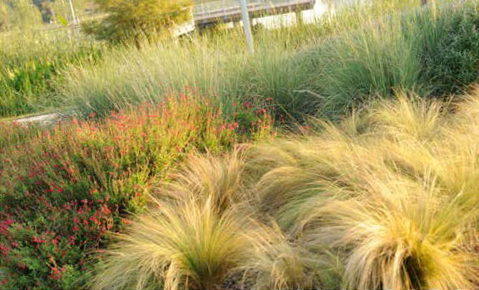Landscape Design

Each space should be designed to bring something unique to the overall Open Space Framework. That said, there needs to be a cohesiveness to the landscape that contributes to a strong campus identity and a distinct and recognizable character of place. Landscape design and the materials used should reflect not only a quality environment, but one that is sustainable and resilient.
Policies:
- The choice of plant material should be hardy, self sustaining, with minimal need for irrigation.
- Trees should be planted to define spaces, to create shade and shelter, to protect from extreme whether conditions, and to provide seasonal interest in terms of colour and form.
- Low-impact design (LID) strategies such as rain gardens, should be used for storm water management and are also a means of showcasing sustainability. Rain gardens can be incorporated in the design of the streets in the urban plaza spaces.
- The choice of plant material should provide beauty, colour and form throughout the seasons and provide opportunities to enhance the natural plant and animal habitat for the area.
- The landscape design should integrate food producing species in certain areas of the campus such as fruit trees, and edible berries that can be enjoyed by the University and surrounding community.
- The landscape design and use of space should be structured to engage faculty and program curricula as opportunities for teaching and learning, including of Indigenous cultures and traditions.
